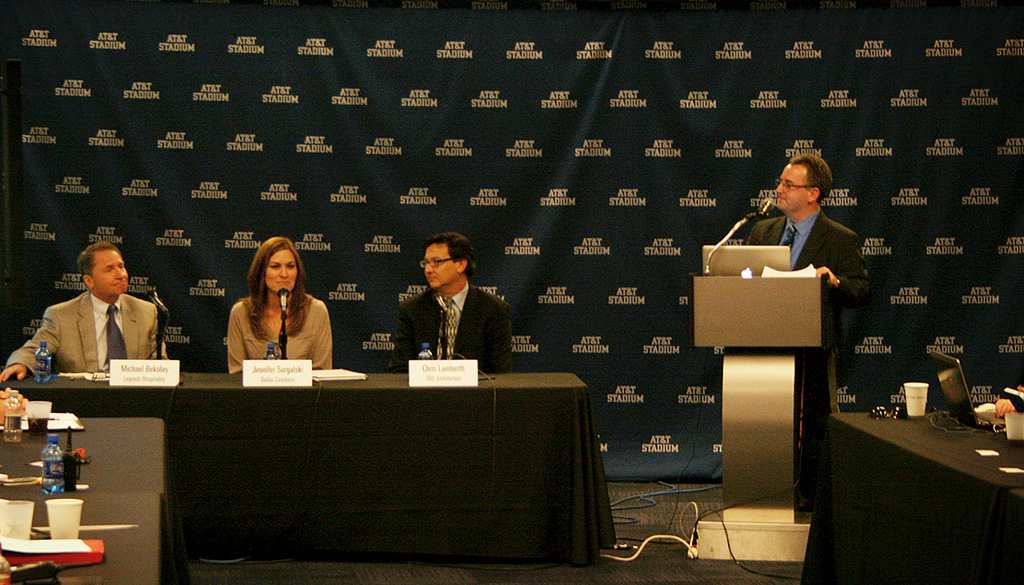“IT doesn’t know what’s cool, and marketing doesn’t know what works,” said Matt Smith, IT director for AT&T Stadium in Dallas. Smith’s pointed statement, though, is exactly why so many people attended the 2013 Stadiums Hybrid Meeting, held in the home of the Dallas Cowboys.
Named “Sofa vs. Stadium,” the meeting tackled the ever-increasing challenge of making the in-person experience of an event preferable to the home experience, or what meeting host Paul Turner, director of event operations and security for AT&T Stadium, called “the marriage of entertainment and excitement.”
While the golden key wasn’t discovered, great information, ideas, and best practices were shared.
Venues around the world are noticing that demand for Wi-Fi is rising, and people want it readily available. In AT&T Stadium, for example, 40 percent of the total audience during a game is connected online at some point, while 23 percent connect simultaneously. The stadium features 1,600 access points, Smith said, but the challenges are still capacity/density, reach, and aesthetics.
Smith continued by discussing what apps can really do.
“They offer ease of navigation (e.g. maps, digital ticketing, food ordering), new experiences, and data capture,” he said. “You should look beyond the app, too, at things such as suite service portals, big boards broadcasting Instagram photos, and social lounges.”
In the end, Smith said that creating a great fan experience comes down to enhancement.
“Don’t mimic the sofa,” he said.
Following Smith’s presentation was a panel discussion featuring Michael Bekolay, vice president of operations for Legends Hospitality; Jennifer Surgalski, director of client services and corporate partnerships at Dallas Cowboys; and Chris Lamberth, sports architect for 360 Architecture.
Lamberth asked some really good questions: How do you reach all the people? What is the journey you’re on to get to a game?
“Consider turning the outside experience inside,” he said. “Think about the brand from start to finish.”
Bekolay said that you have to be aligned with the team and building to enhance the fan experience.
“Do away with silos,” Bekolay said. “Get all departments working together.”
One thought really stood out, though.
“Be an expert about your fans,” Surgalski said. “And be honest with your sponsors.”
Bekolay agreed, saying that you have to understand your customers first before planning anything.
“The future is, what do you do with the data,” he said.
Cory Miller, digital media manager and associate game day producer for the Dallas Cowboys, closed the meeting with a discussion about engagement through entertainment.
“One good strategy is to have fans experience the game day like it’s their first time attending the event,” he said. “Traditions are also important.”
In the end, I came away with this nugget: know your fans personally + be super helpful = great fan experience. It’s not the great solution, sure, but it’s a start. The more fans can experience something personal in a crowded environment, the more they’ll keep coming to that place. Think about it. That’s why we like our homes, because they’re extensions of our selves. Help people extend themselves into your venues, and you’ll have them coming back day after day.
What’s your strategy for getting people off the sofa and into your venue? Please let us know in the comments section.
(Image via IAVM WHQ/Jason Judy)

